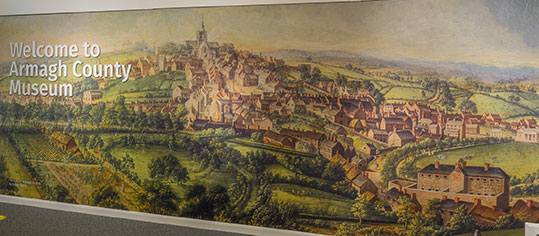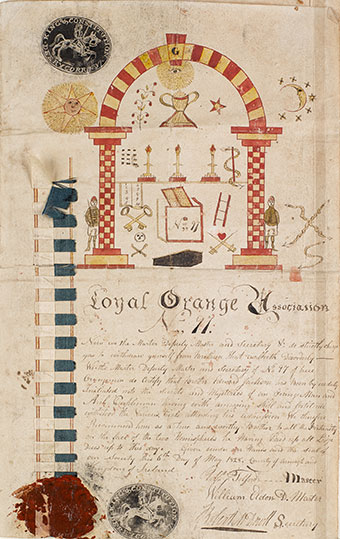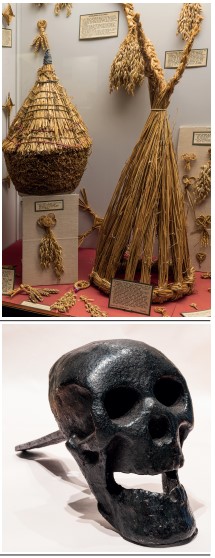Armagh County Museum
Published in Issue 5 (September/October 2021), Reviews, Volume 29The Mall, Armagh, Co. Down
https://visitarmagh.com/places-to-explore/armagh-county-museum/
sarah.millsopp@armaghbanbridgecraigavon.gov.uk
By Tony Canavan
Armagh County Museum is of historical interest in itself, as it was the first county museum to open in Ireland and is located in what is probably the first purpose-built local museum. It owes its origins to the Armagh Natural History and Philosophical Society, which moved from its premises on Abbey Street to what was originally a schoolhouse on the Mall in 1856. The Society opened a reading room and over the years continued to expand their museum, adding to a collection of objects gathered both locally and from further afield. When Armagh County Museum took over the building and opened to the public in 1937, it inherited the Society’s collection. The Society is still in existence and continues to retain a reading room in the museum, where it holds regular events. The museum building is of neoclassical style, very much in keeping with the Georgian character of this cathedral city.

Above: The large-scale reproduction in the reception area of a painting of Armagh city in the nineteenth century by James Black.

Above: An early Orange Order remit. (Armagh County Museum)
Like other institutions, the museum had to close because of the Covid-19 pandemic. Even though museums and galleries in Northern Ireland opened sooner than those in the Republic, Armagh Museum is still down on visitor numbers compared to before the pandemic. Hand sanitisation, mask-wearing and social distancing do not, however, detract from the visitor experience. Since I last visited, some changes have been made. There is a new reception area and gallery for temporary and visiting exhibitions. The reception is now a large, bright room that gives a foretaste of what is to come.
There are display cases here where hidden treasures from the museum’s collection can be put on view. The contents of these cabinets are regularly rotated, meaning that objects that may have been in storage for years, or decades, can be highlighted. Perhaps the most impressive element of the reception area is the large-scale reproduction of a painting of Armagh city in the nineteenth century by James Black. This gives a panoramic view of the city as it was then, a handful of streets dominated by the Church of Ireland cathedral. This image covers an entire wall and is complemented by a similar reproduction of an Ordnance Survey map of the city from 1835 on another wall.
The main exhibition is on the first floor, which is accessible by stairs or a lift. You come in through the temporary exhibition gallery, which on the day of my visit contained a collection of works of art from local school students. The main gallery has not changed much since I was last there and most of the exhibits date from the early days of the museum, evidenced by the information labels being typed on card. Far from making it seem old-fashioned, this is a reminder of the antiquity of the County Museum itself. Paradoxically, the artefacts on display, whether hundreds or thousands of years old, do not ‘age’ and have the same fascination now as when the museum opened in 1937. There is a huge array of archaeological objects from across County Armagh, with an impressive collection of stone and bronze axeheads.

Above (top): An early Orange Order remit.
Top right: Straw mummer’s mask and other
straw folkcraft.
Above (bottom): The iron skull that once decorated the gallows outside Armagh Gaol.
(All images: Armagh County Museum)
The exhibition in this gallery gives a good impression of the history and heritage of the whole county. The exhibits from the historical period reflect the range of experience of the people of Armagh, encompassing agriculture, religion, civil society, military history and much more. Here a collection of Orange memorabilia sits not far from examples of crosses made in the Penal era. The large collection of costumes, from ladies’ evening gowns to soldiers’ uniforms, is always worth a look and you’ll still notice something that you didn’t see before.
Other aspects of the county’s history on display include folkcraft and the railways. Folkcraft includes everyday objects made of straw, such as a hen’s nest and a horse collar, and special objects such as harvest knots or a mummer’s conical hat. It also includes a myriad of objects made from wood, some very ancient indeed. The railway was of vital importance to Armagh, which became the junction where a number of lines met. This transformed Armagh from a sleepy ecclesiastical capital to a bustling market town, and its history is well recorded in the displays here.
Other things to look out for in this area include an iron skull that once decorated the gallows outside Armagh Gaol. Public executions took place here until 1866. A new thing that caught my eye was a carved stone head with grotesque ears that was built into a wall in Dawson Street but is believed to originate from the medieval abbey of St Peter and St Paul. Another new display is the Tynan Hoard, which comes from Tynan Abbey. This consists of several ancient silver bracelets in various stages of production.
When you add to this the ‘non-historical’ displays on geology, forestry and wildlife (a collection of stuffed birds and animals), there is lots to see in Armagh County Museum, and no matter how many times you go it is always worth another visit.
Tony Canavan is Consultant Editor of Books Ireland.
















